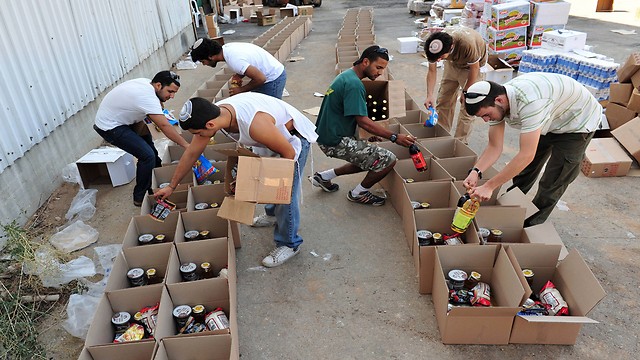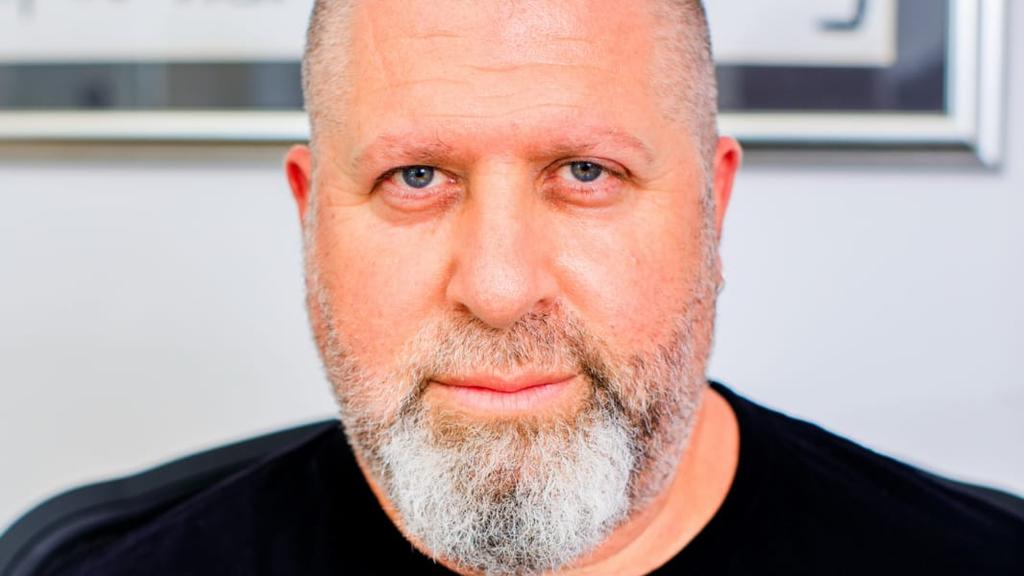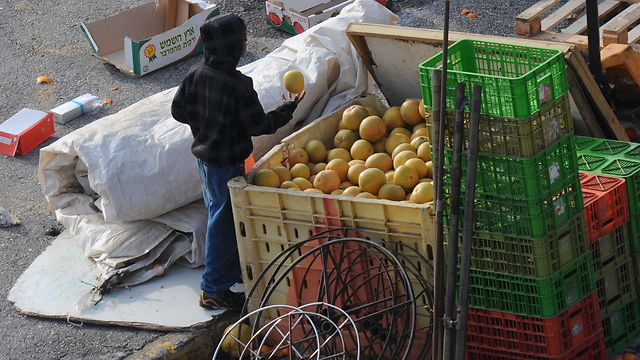Getting your Trinity Audio player ready...
How long does it take in Israel to go from the middle class to deep poverty and needing assistance from food charities?
The Latet -Israeli Humanitarian Aid organization, which works to reduce poverty, has calculated five scenarios that chart the path of the new coronavirus unemployed to poverty, with the need to use a food organization to feed their family members.
This path takes between seven and 30 months, depending on the data - those who have savings or a car they can sell will hold out longer than those who don't.
Even a family of higher earners could find themselves in poverty and have difficulty paying for food within two years.
And perhaps the most surprising conclusion is that it is not necessary for both earners to lose their jobs in order to degenerate into poverty. One is enough.
The self-employed will fall faster, both because of the expenses of the business and because the grants are smaller than the unemployment benefits.
Latet CEO Eran Weintrob says that "once you lose the main source of livelihood it takes the family almost immediately below the poverty line. This happens even if the other breadwinner earns above the minimum wage. It is not possible to address the basic needs when the main source of livelihood has been lost."
And these are the five scenarios of the decline into poverty.
Firstly, a family from the third decile, where the two breadwinners earn the minimum wage. A job loss for one of the family members will bring them below the poverty line.
The family has almost no ability to raise funds from other sources: no car to sell, no savings and the ability to take out loans is very limited. Such a family will start cutting food expenditure after 9 months and will need help from food associations after 11 months - or 16 if unemployment benefits are indeed paid until June.
The second scenario examines a family from the third decile in which a single mother earns the average wage in the economy - which is about 25% higher than the average wage for women.
Such a family will fall below the poverty line after seven months, when unemployment benefits end. Even the return of the mother to work part-time will not get the family out of the crisis.
5 View gallery
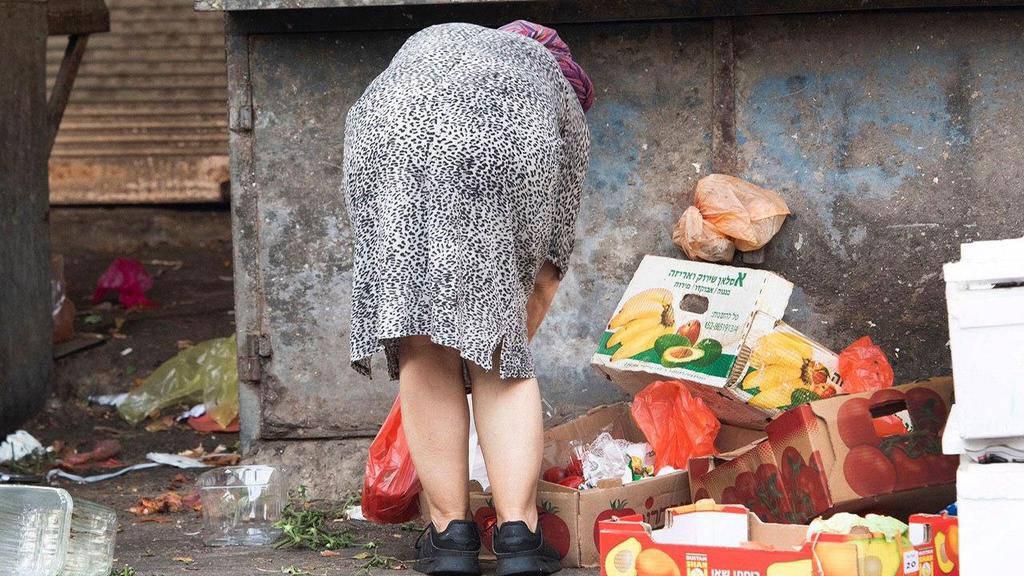

A woman searching for food among the garbage in Tel Aviv during the pandemic
(Photo: Nadav Abas)
In addition, the scenario is based on the assumption that the mother receives monthly alimony as usual, but in many situations this is not the case. The family will need assistance from food associations after 11 months - or 16 if unemployment benefits are paid until June.
The third scenario examines a family from the fifth decile, that is, the middle class, in which one earns a living wage at the level of the average wage and another at the level of the minimum wage.
The couple has four children, so the loss of work for one of them puts them below the poverty line. In such a situation, they will need assistance from food associations after 13 months, or 18 if unemployment benefits are extended.
The fourth scenario examines a family from the fifth decile in which one of the breadwinners is self-employed. Their situation is much worse. Not only is the average income per self-employed person about half the average wage in the economy, the compensation benefits for the self-employed were lower than the unemployment benefits, while the expenses for suppliers continued.
Such a family will come for aid from food associations within 8 months. In that case, there will be grants for the self-employed instead of unemployment benefits, but they are lower and will help less.
The fifth scenario deals with a family from the seventh decile, i.e. a high middle class, where one of the breadwinners earns an average wage and the other a higher wage. The main advantages of such a family in dealing with the crisis are the savings, for example a study fund and a more expensive vehicle that can be realized.
The downside is a much higher level of spending that is hard to get out of. As a result, such a family consumes the money at its disposal much faster.
If the unemployed breadwinner does not find work, the family will move from a welfare life to the need for assistance from food associations after two years and a month, even though the secondary breadwinner continues to work.
5 View gallery
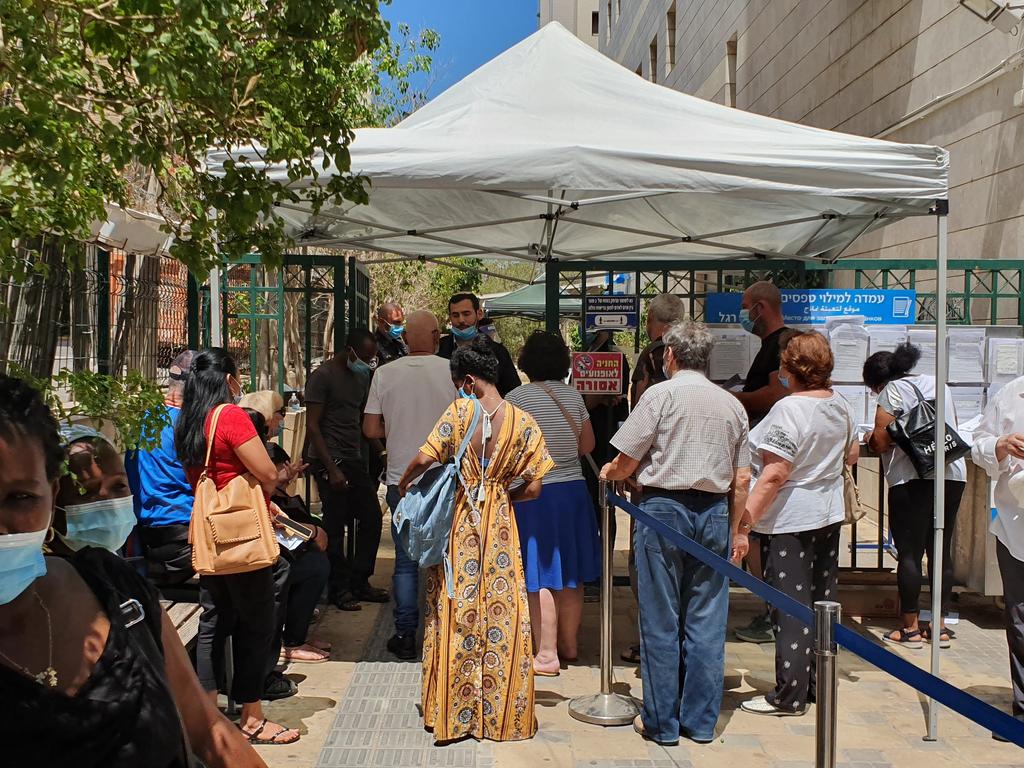

Israelis queuing at the National Insurance Institute offices in Petah Tikva during the pandemic
(Photo: Yariv Katz)
All scenarios assume that families will make use of severance pay. This money is part of the pension savings, so mass unemployment not only severely hurts many families today, but also guarantees mass poverty of the unemployed in their old age.
Once the coronavirus unemployed stop receiving unemployment benefits, most of them cannot expect assistance from the state, or symbolic assistance at best. This is especially true if one of them works. The reason is very strict conditions set by the state for receiving an income guarantee allowance, which is the last life line offered to citizens.
One of the most worrying and painful conclusions from the study is that this could happen to anyone of us.
Naama Yardeni is the head of research at Latet, Israel's largest NGO combating poverty and food insecurity


